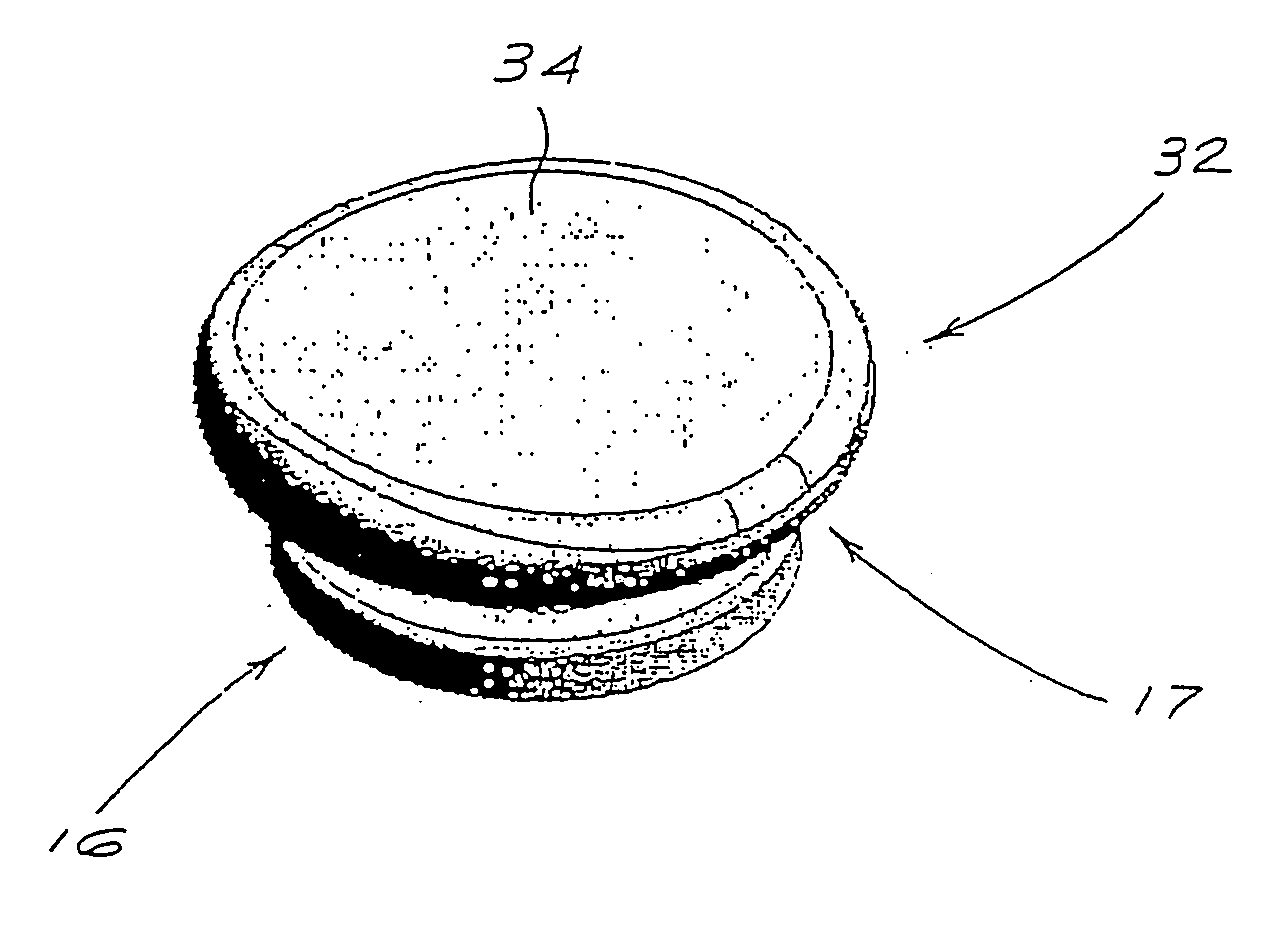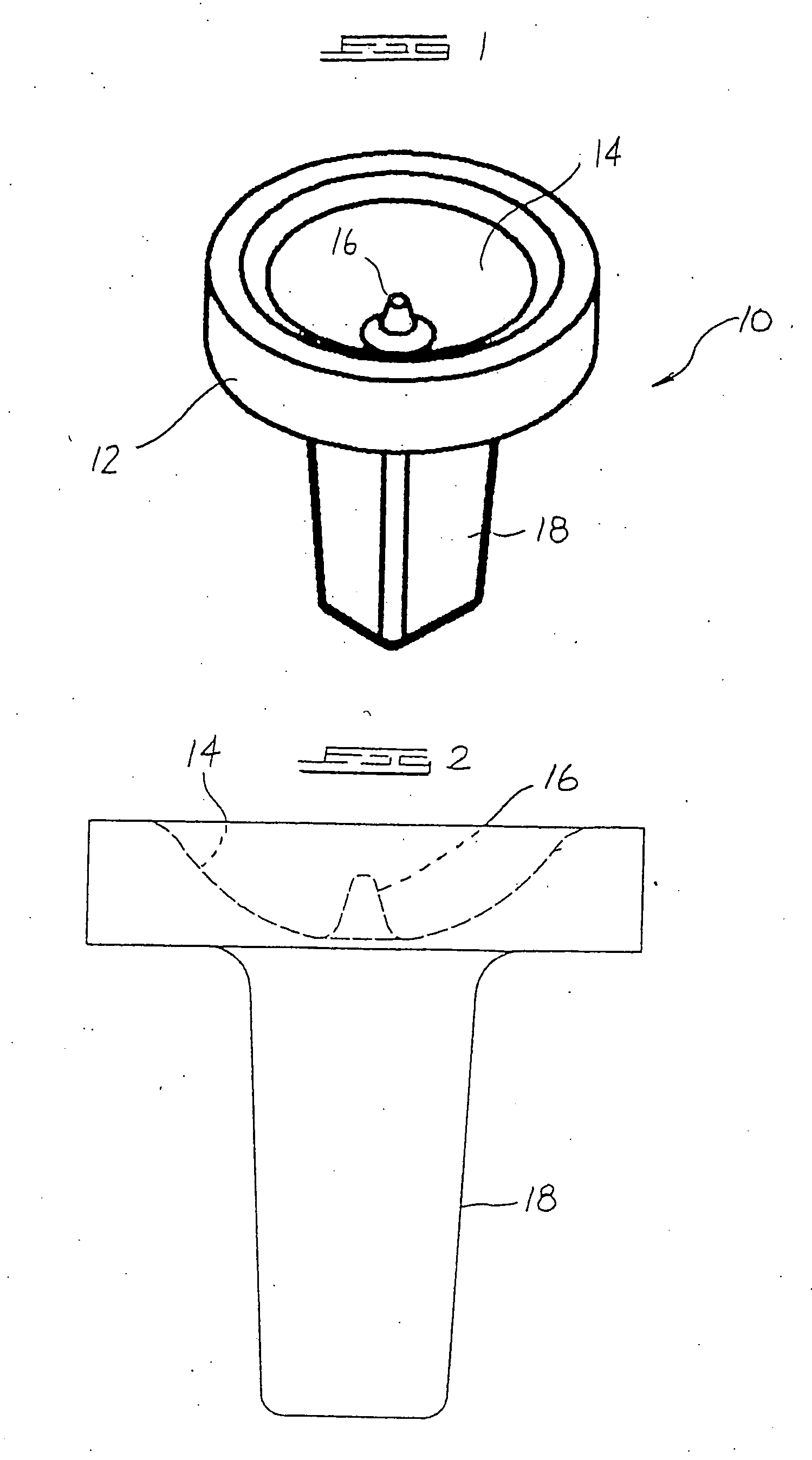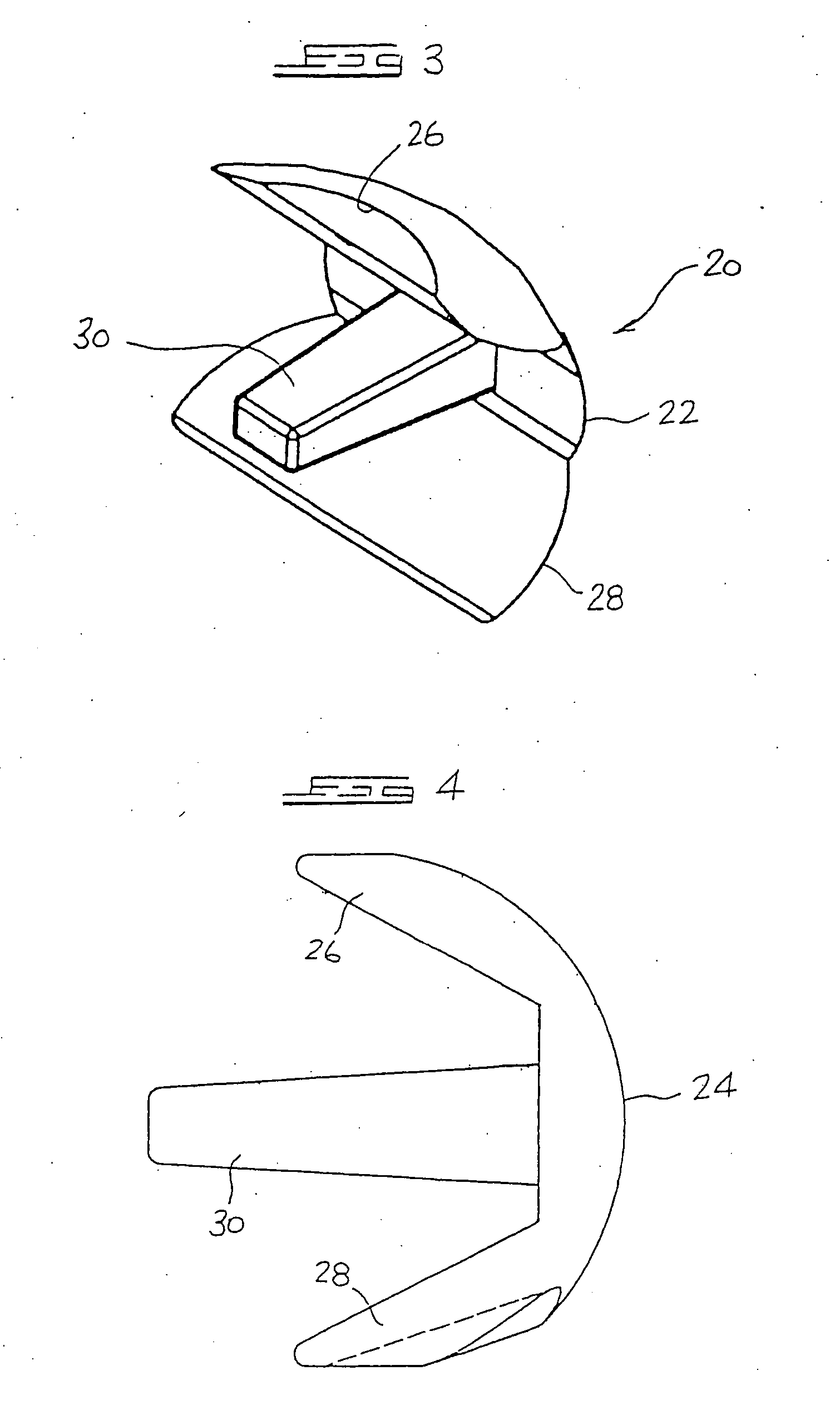Arthroplasty implant
a technology of implant and lateral separation, applied in the field of arthroplasty implants, can solve the problems of limiting the flexibility of the intermediate, the load-transmitting ability or life expectancy, etc., and achieve the effect of preventing lateral separation and preventing lateral separation
- Summary
- Abstract
- Description
- Claims
- Application Information
AI Technical Summary
Benefits of technology
Problems solved by technology
Method used
Image
Examples
first embodiment
[0035] the invention is illustrated in FIGS. 1 to 12 of the drawings. In this embodiment, FIGS. 1 and 2 illustrate a first, phalangeal component 10 which is connected in use to a phalanx. It includes a body 12 formed with a spherically curved, concave surface 14. Projecting centrally from the surface 14 is a conical peg 16 and projecting rearwardly from the body 12 is a tapered post 18 of square cross-section. In use, the post 18 is placed and anchored in a predrilled hole in the phalanx.
[0036] FIGS. 3 to 5 illustrate a second, tarsal component 20 which is connected in use to the associated tarsus. It includes a body 22 with a convexly curved surface 24 and curved skirts 26, 28. The radius of curvature of the surface 24 in the view of FIG. 4 is less than the radius of curvature in the view of FIG. 5. Projecting rearwardly from the body 22 is a tapered post 30 of square cross-section. In use the post 30 is placed and anchored in a predrilled hole in the tarsus.
[0037] Both the phalan...
second embodiment
[0043] the invention is illustrated in FIGS. 13 to 19 of the drawings. In these Figures features corresponding to features seen in FIGS. 1 to 12 are indicated by the same reference numerals.
[0044] Notable differences between the first or phalangeal component 10 illustrated in FIGS. 13 and 14 and the first component 10 seen in FIGS. 1 and 2 are the absence of the central peg 16 and the inclusion of an annular, peripheral wall 52 which bounds the concave surface 14 and which is formed with an undercut 50 defining a laterally inwardly facing recess. The wall 52 and concave surface in combination define a cup-shaped receptacle 53.
[0045] Another difference between the component 10 of FIGS. 13 and 14 and that of FIGS. 1 and 2 is the face that the post 18 has a round cross-section and is provided at its end with barb formations 54.
[0046] The second or tarsal component 20 of the second embodiment is seen in FIGS. 18 and 19. This component differs from the second component illustrated in F...
PUM
| Property | Measurement | Unit |
|---|---|---|
| radii of curvature | aaaaa | aaaaa |
| length | aaaaa | aaaaa |
| friction | aaaaa | aaaaa |
Abstract
Description
Claims
Application Information
 Login to View More
Login to View More - R&D
- Intellectual Property
- Life Sciences
- Materials
- Tech Scout
- Unparalleled Data Quality
- Higher Quality Content
- 60% Fewer Hallucinations
Browse by: Latest US Patents, China's latest patents, Technical Efficacy Thesaurus, Application Domain, Technology Topic, Popular Technical Reports.
© 2025 PatSnap. All rights reserved.Legal|Privacy policy|Modern Slavery Act Transparency Statement|Sitemap|About US| Contact US: help@patsnap.com



